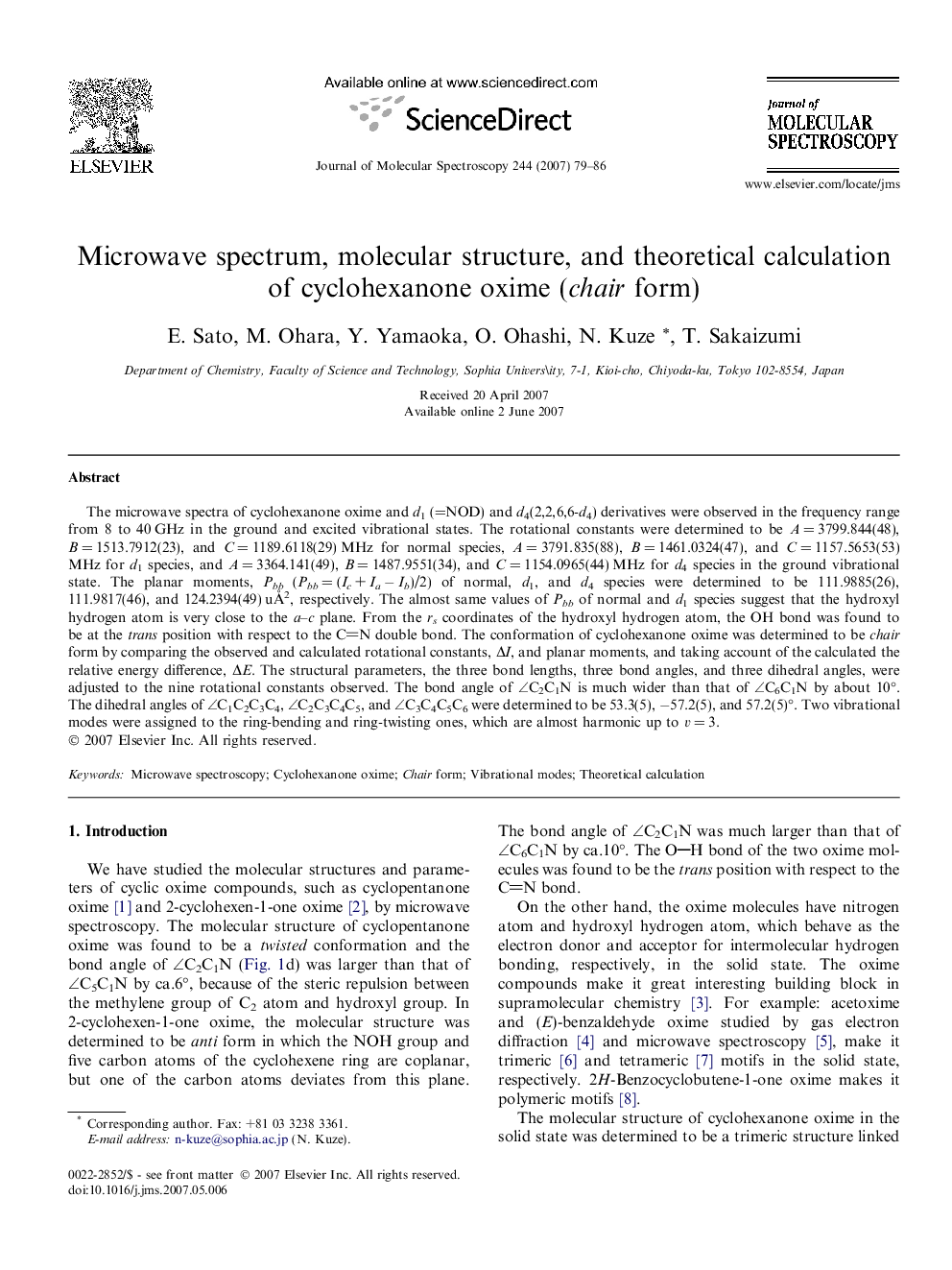| Article ID | Journal | Published Year | Pages | File Type |
|---|---|---|---|---|
| 5415803 | Journal of Molecular Spectroscopy | 2007 | 8 Pages |
Abstract
The microwave spectra of cyclohexanone oxime and d1 (=NOD) and d4(2,2,6,6-d4) derivatives were observed in the frequency range from 8 to 40 GHz in the ground and excited vibrational states. The rotational constants were determined to be A = 3799.844(48), B = 1513.7912(23), and C = 1189.6118(29) MHz for normal species, A = 3791.835(88), B = 1461.0324(47), and C = 1157.5653(53) MHz for d1 species, and A = 3364.141(49), B = 1487.9551(34), and C = 1154.0965(44) MHz for d4 species in the ground vibrational state. The planar moments, Pbb (Pbb = (Ic + Ia â Ib)/2) of normal, d1, and d4 species were determined to be 111.9885(26), 111.9817(46), and 124.2394(49) uÃ
2, respectively. The almost same values of Pbb of normal and d1 species suggest that the hydroxyl hydrogen atom is very close to the a-c plane. From the rs coordinates of the hydroxyl hydrogen atom, the OH bond was found to be at the trans position with respect to the CN double bond. The conformation of cyclohexanone oxime was determined to be chair form by comparing the observed and calculated rotational constants, ÎI, and planar moments, and taking account of the calculated the relative energy difference, ÎE. The structural parameters, the three bond lengths, three bond angles, and three dihedral angles, were adjusted to the nine rotational constants observed. The bond angle of â C2C1N is much wider than that of â C6C1N by about 10°. The dihedral angles of â C1C2C3C4, â C2C3C4C5, and â C3C4C5C6 were determined to be 53.3(5), â57.2(5), and 57.2(5)°. Two vibrational modes were assigned to the ring-bending and ring-twisting ones, which are almost harmonic up to v = 3.
Related Topics
Physical Sciences and Engineering
Chemistry
Physical and Theoretical Chemistry
Authors
E. Sato, M. Ohara, Y. Yamaoka, O. Ohashi, N. Kuze, T. Sakaizumi,
